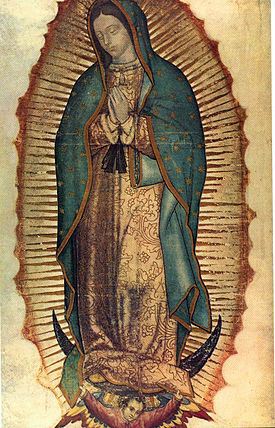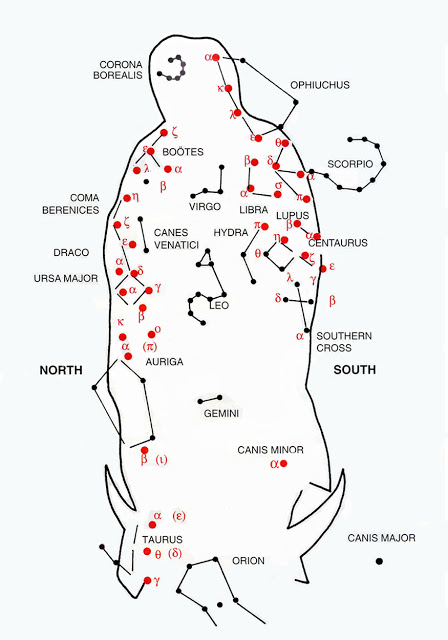Our Lady of Guadalupe for atheists
By Tom Quiner
I’d like to present a fascinating mystery for my readers who are atheists.
The day was December 9th, 1531. It was the Feast of the Immaculate Conception in the Spanish Empire.
A peasant by the name of Juan Diego was walking and encountered the vision of a teenage girl bathed in light.
She asked the peasant to have a church built on this site in her name.
Who was she? Juan Diego determined that it was the Virgin Mary, the Mother of Jesus, the Son of God.
Juan took the message to the Bishop who asked for a miraculous sign that would prove her identity.
When Juan returned to the hillside to convey the request, Mary told him to gather roses that would be found at the top of the hill.
In December? Roses in December? But Juan found Castilian roses growing, which are not native to Mexico. And he found them in a spot that was normally barren.
He took them to Mary who placed them in the peasant’s tilma cloak. (Tilma is a flimsy fiber made from the cactus plant.)
So the miraculous sign was the roses, right? The bishop was going to be amazed when he saw a mound of roses this time of year in a peasant’s cloak. Right?
As the saying goes, you ain’t seen nothin’ yet.
Juan Diego opened his cloak before the bishop.
The roses tumbled to the ground.
What the bishop saw astounded. Imprinted on the cloak, against which the roses had been pressed, was a startling image that is now known as “Our Lady of Guadalupe,” which you can see above.
‘What a nice little folk tale’ is what you may be thinking. And I would agree if that was all there was to the story.
Let us set aside the many miracles attributed to this mysterious icon. Let us just reflect on a few scientific observations.
Tilma is a material that has a shelf life of about 30 to 40 years. The tilma bearing the image of “Our Lady” is still intact and in good condition today, 483 years later. A scientist who analyzed the material, Dr. Adolfo Orozco, offers no explanation as to the super durability of this particular tilma.
The tilma received no protection for the first 116 years of its existence, which subjected it to UV rays that break down the material over time. It was also subjected to the relentless kisses and tears of the faithful who were allowed to press their face to the icon in those early decades of its existence.
Another scientist, Dr. Aste Tonsmann, a civil engineer with a doctorate from Cornell University, was allowed to use new, sophisticated digital imagery on the eyes of the icon.
He magnified the eyes 2500 times and made a startling discovery. There is a reflection embedded in the irises of the eyes of Mary of thirteen people who were allegedly present when Juan Diego opened his tilma and let the roses fall to the ground.
These images are undetectable without very modern scientific instruments. They would have been impossible for an artist of the 16th century to have created them.
In 1938, another scientist tried to figure out how the icon was painted. Richard Kuhn, the 1938 Nobel Prize winner in chemistry, discovered that the image wasn’t made with natural animal or mineral colorings.
There were no synthetic colorings in 1531. He can’t explain how the image was created.
Even more, there are no brush or sketch marks present.
Now, take a look at the stars on Mary’s mantle. Another scientist analyzed their placement back in 1981 at
the Observatory Laplace Mexico City.
Dr. Hernández Illescas, a medical doctor and amateur astronomer working with Fr. Mario Rojas, performed an astronomical study of this star pattern.
They discovered the stars weren’t randomly placed. Rather, they are precisely aligned to create a stellar replication of constellations seen in a Mexican sky in the winter-morning solstice of December 12th, 1531, Saturday, at 10:26 AM.
Interesting, isn’t it?
Science raises more questions than it answers.
How come the fabric survives?
Don’t know.
How in the world was the thing painted?
Don’t know.
How could an artist have painted microscopic reflections in the irises of Mary’s eyes?
He couldn’t, it is impossible.
How could a dumb peasant have done any of this along with accurately depicting the constellations?
Maybe he didn’t.
Maybe it is just another mystery of our faith.



There does not appear to be any mystery Tom, and you need more convincing stuff than this to convert atheists. With a quick look on the internet avoiding all the Catholic sites who seem to care more about faith and folk stories than facts, this is just another scam like the shroud of Turin.